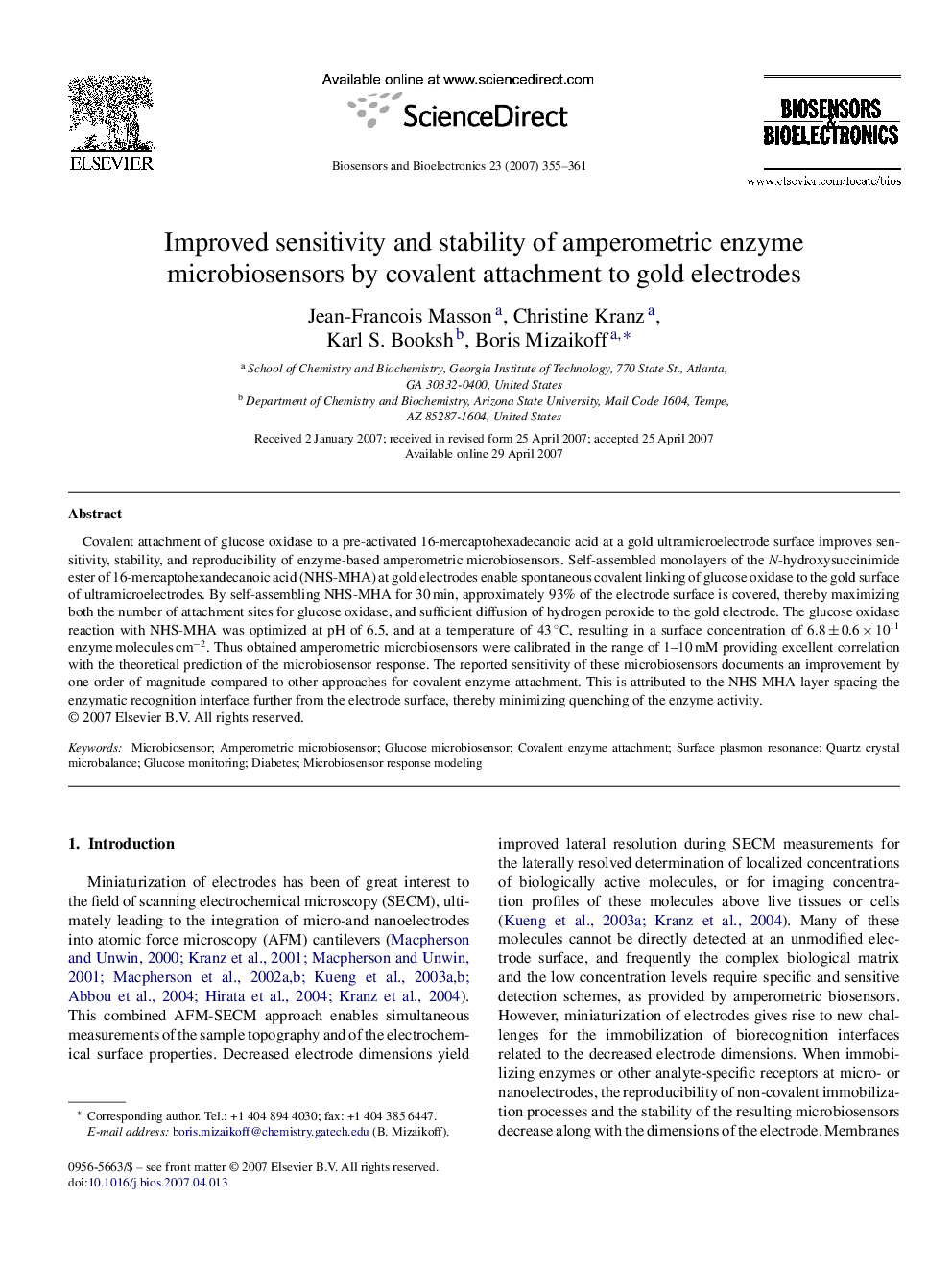| Article ID | Journal | Published Year | Pages | File Type |
|---|---|---|---|---|
| 870022 | Biosensors and Bioelectronics | 2007 | 7 Pages |
Covalent attachment of glucose oxidase to a pre-activated 16-mercaptohexadecanoic acid at a gold ultramicroelectrode surface improves sensitivity, stability, and reproducibility of enzyme-based amperometric microbiosensors. Self-assembled monolayers of the N-hydroxysuccinimide ester of 16-mercaptohexandecanoic acid (NHS-MHA) at gold electrodes enable spontaneous covalent linking of glucose oxidase to the gold surface of ultramicroelectrodes. By self-assembling NHS-MHA for 30 min, approximately 93% of the electrode surface is covered, thereby maximizing both the number of attachment sites for glucose oxidase, and sufficient diffusion of hydrogen peroxide to the gold electrode. The glucose oxidase reaction with NHS-MHA was optimized at pH of 6.5, and at a temperature of 43 °C, resulting in a surface concentration of 6.8 ± 0.6 × 1011 enzyme molecules cm−2. Thus obtained amperometric microbiosensors were calibrated in the range of 1–10 mM providing excellent correlation with the theoretical prediction of the microbiosensor response. The reported sensitivity of these microbiosensors documents an improvement by one order of magnitude compared to other approaches for covalent enzyme attachment. This is attributed to the NHS-MHA layer spacing the enzymatic recognition interface further from the electrode surface, thereby minimizing quenching of the enzyme activity.
